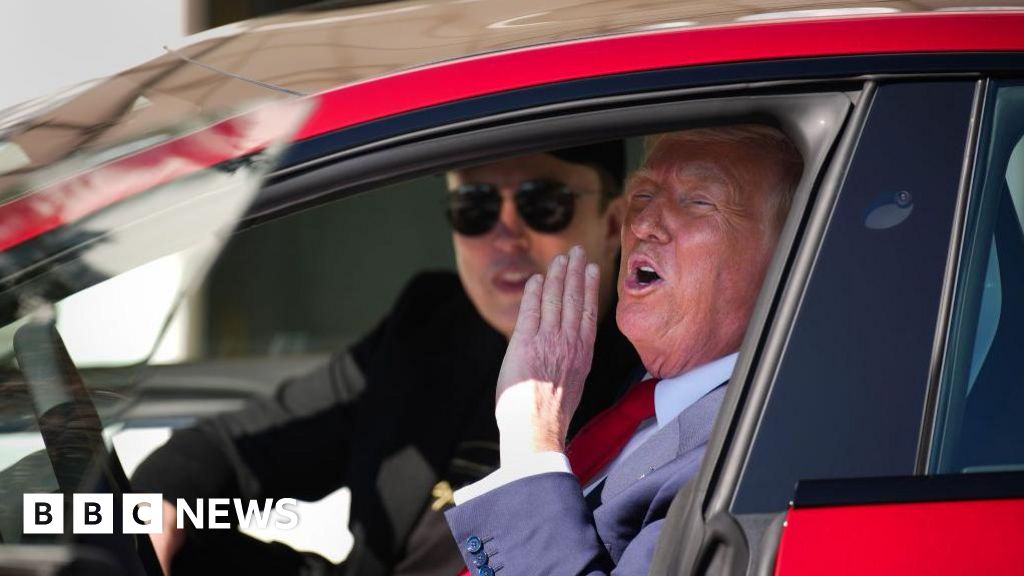It’s been a big summer for cinema. After a slow few years, moviegoers have returned in droves, hungry for the high-production, ambitious blockbusters on offer.
This special looks at the global cinema industry through the lenses of nine photographers. Spanning Brigitte Lacombe on film sets, Park Chan-wook’s everyday objects, Gelareh Kiazand’s Iranian women and Nadia Lee Cohen’s vision of Hollywood, it’s a celebration of the art, craft and big personalities of moviemaking.
Celebrity
Brigitte Lacombe
FRANCE and the US
French photographer Brigitte Lacombe has been photographing film sets since 1975. Working for Elle magazine that year, aged 25, she found herself in Cannes, photographing Dustin Hoffman. “He threw me this invitation to come and work on this next movie when I left,” she told journalist Emily McDermott in 2015. “It turned out to be All the President’s Men.”
In the five decades since, Lacombe has photographed behind the scenes of films being made by Martin Scorsese, with whom she has a longstanding friendship, Federico Fellini, Steven Spielberg, Sofia Coppola, Wes Anderson, Quentin Tarantino, Lynne Ramsay, Michael Haneke and many more.
The skill, she says, is to “be invisible, interested, patient”. Above all, it’s “to love cinema, and to love actors”. It is the opposite world to her regular studio work, photographing Dior campaigns or making editorial shots of artists, politicians and intellectuals.



“In the studio, I am in control. On a film set, I am a guest. I have no control over anything. Even though I am there at the invitation of the director, my presence is not essential. I need to adapt to their world and observe, find my way without interfering.”
Her pictures offer a glimpse into a world otherwise concealed. During the making of All the President’s Men, shot on location in Washington DC, she captures director Alan Pakula and Robert Redford deep in conversation with their crew, with the Lincoln Memorial standing firm in the background. In another, John Malkovich holds a cigarette to Uma Thurman’s lips on a break from shooting Dangerous Liaisons in a château just outside Paris. They are “a mixture of themselves, smoking with sunglasses”, Lacombe observes, and professionals, dressed in their period costumes and ready to return to work.
Nadia Lee Cohen
US and UK




Nadia Lee Cohen is a photographer, film-maker and self-portrait artist. Essex-born and now based in the US, she is heavily inspired by Americana and British cinema, particularly from the 1960s and ’70s. Her photographs of stars, including Sophia Loren and Lana Del Rey — often set against a backdrop of a sultry, sweaty LA — straddle the line between the glamorous and the garish. She’s best known for Women, a series of 100 portraits of women wearing whatever they feel it is to be “unclothed”. The resulting images present a vision of “strong femininity”, she says. She answers our questions about her cinematic inspirations.
If you could be any movie star for a day, who would you be?
Is Larry David a movie star?
What’s your favourite movie?
The Shining is still my favourite.
What is “star quality”?
Feeling that someone is in a room before you’ve actually seen them. And having one of those signed photos of yourself on the wall of an Italian restaurant.
Which artist is inspiring you now?
I’ve a recent fascination with the ambulance-chaser photographer Enrique Metinides, in particular the image “Adela Legarreta Rivas is struck by a white Datsun on Avenida Chapultepec, 29 April 1979”.
What’s the best thing about living in LA? And the worst?
The way it looks and the way it looks.
Which photograph do you wish you’d taken?
That photo from New Year’s Eve on a street in Manchester that looks like a renaissance painting.
Is self-invention a bad thing?
Bad self-invention is bad. Good self-invention is great.
‘Women’ (5th edition) will be published by IDEA on September 17
Kalpesh Lathigra
UK




Over the past 10 years, Kalpesh Lathigra has photographed everyone from Carey Mulligan to Keir Starmer, the refugees at the Za’atari refugee camp in Jordan and his friends and family in London using his Polaroid Studio Express — a four-lens camera typically used to take UK passport photos. “The passport or identity card photograph is the one photograph we all have,” he says.
Lathigra’s A Democratic Portrait series has become a way for the photographer to equalise his subjects: everyone is treated with the same basic flash lighting and proportions. It’s also been a means to retain some creative control over his photographs.
Free from the constraints of the creative direction of celebrity photoshoots, Lathigra has been able to capture his subjects more candidly. Preparing his sitters, he asks simply for their “quietness and introspection”. “It allows a form of transcendence,” he says. But some are old hands. Joan Collins was “the consummate professional, charming and effectively controlling the whole affair,” recalls Lathigra. She checked her hair and changed her outfit for the picture. “In essence, she knew exactly how she wanted to be seen.”
Art
Christian Marclay
UK






I first thought of making a video about doors while working on my 24-hour installation “The Clock”, a sequence of film fragments showing clocks that flowed in real time. I was searching for “editing points” that would allow me to move from one minute to the next, one film excerpt to another. I noticed that a door scene offered an interesting transitional moment.
The door is a threshold between two spaces, but it could also be a threshold between two films. Someone opening a door and entering a new space is usually filmed with a “shot-reverse shot”, where the door is opened from one side and the camera is moved to the other side to show the actor entering the next space. In my film, someone opens a door then someone else enters a new space and a new film. We accept the illusion briefly, and then we see the actors are not the same. We realise we have been fooled.
These editing techniques form the basis of cinematography. They are the grammar of cinema. Movies are made from thousands of fragments, edited together to create an illusion of continuity, a realistic flow and, ultimately, a narrative.
The film that really allowed me to understand this was Maya Deren’s Meshes of the Afternoon, which I saw as an art student in the late 1970s. She used jump cuts to show someone’s feet while they were walking, but each step was taken on a different surface: carpet, concrete, grass, sand.
“Doors” has been the most difficult of all my videos to edit. I had to find scenes in which an actor enters and exits a space, then the speed of the motion had to match, as well as the direction of the opening door (pushed or pulled, hinged left or right). I had an assistant watching everything from American film noir to French New Wave, Hollywood blockbusters and obscure German B-movies. I focused on the editing, which is all-consuming. I did not have the pleasure of watching all of these films (which is why my knowledge of cinema is, surprisingly, spotty). It would be too distracting.
Doors are fascinating objects, rich with symbolism. They can hide or reveal, express opposites of light or dark, exterior or interior, open or closed. This richness is the reason film-makers love them. Making this video, I realised that even though we constantly encounter doors, we don’t think much about them. Try to remember all the doors you’ve gone through today. We are constantly pushing and pulling them, entering and exiting architectural spaces. They are commonplace, yet unfamiliar. We find ourselves wondering what is on the other side, where we may end up. There is the fear and anxiety we associate with the unknown, but also anticipation and potential.
Words by Christian Marclay. ‘Doors’ is on show at White Cube Mason’s Yard from September 6 to 30
Film Posters
Egypt

From the 1930s until the 1980s, Egyptian films were the most widely watched cinema across the Arab world. As the country refined its movie-making style (melodramatic, musical, rich with romance), a parallel industry emerged in the accompanying posters. These were made mostly with stone lithographic printing and designed by illustrators who worked independently from the production studios. Excitement around the release of new posters soon began to rival that around the films themselves. Would-be viewers would see new designs plastered around Cairo’s squares and on rooftop billboards, as Joseph Fahim recalls in Moving Pictures Painted: 200 Posters From the Golden Age of Egyptian Cinema. “For decades, the sight of movie posters was integral to Egyptian life.” They became “more than mere publicity tools; they were dreamscapes close at hand”. Subtlety, he writes, held little importance, and their sumptuous designs mirrored the melodrama of the stories they advertised. “Each carried a confection of emotions, sentiments and big personalities. Love, action, comedy, sex, violence, fantasy.”
From ‘Moving Pictures Painted: 200 Posters From the Golden Age of Egyptian Cinema’, with essays from Joseph Fahim, Haytham Nawar and Christiane Gruber, published by CentreCentre
Park Chan-wook
South Korea

As a student, Park Chan-wook wandered the streets of Seoul with his photography club, his eye drawn to the city itself over its inhabitants.
He went on to become a film-maker, producing meticulously plotted psychological thrillers (Oldboy, The Handmaiden and Decision to Leave), but continued to make still photographs in his free time, describing the spontaneity of photography as an “antidote” to the painstaking work of film-making. In 2021, he published a photography book titled Your Faces.

Chan-wook is still interested in the cityscapes and inanimate subjects he photographed in his youth, but in Your Faces we see his desire to find characters, or faces, within each frame. “Whether it’s landscape or still life, perhaps I shoot all things as if shooting a portrait,” he has said. “I portray the status, character, life dynamics, current sentiment, and face of whoever has become the subject of my camera. This is how I communicate with all beings of the world.”
As film magazine editor Haery Kim observes in an essay accompanying Chan-wook’s photographs, “here is a storyteller freed from the confinements of storytelling”.
Park Chan-wook’s ‘Your Faces’ is published by Eulyoo Publishing
Gelareh Kiazand
US and Canada




These portraits were taken by Iranian film-maker and photographer Gelareh Kiazand during the filming of Shirin by Abbas Kiarostami. The film records more than 100 actresses sitting in a cinema, watching a screening of a tragic love story by the Persian poet Nizami Ganjavi, entitled “Khosrow and Shirin”. “Shirin was one of Kiarostami’s favourite films that he made. It was his tribute not only to one of Iran’s oldest love stories, but to cinema,” Kiazand says. “He believed cinema exemplified the art of a reaction. We as the audience would see how these women reacted to feeling love and loss. That was also the aim of the photographs.” She shot them as a series of reactions from one angle, to show no distinction, hiding in a corner behind a black cloth with only her lens visible, so as not to influence the actors. “Working with him taught you to keep it simple and just watch life.”
Kiazand’s work is included in ‘Breathing Space: Iranian Women Photographers’ by Anahita Ghabaian, published by Thames & Hudson
Craft
Sarker Protick
Bangladesh




Bangla films tend to follow the same narrative structure: a romance between a hero and a heroine comes under threat from a vengeful villain. The tension often stems from the risk of violence (which, when it comes, is often paired with comic sound effects).
Following the unrest in Bangladesh in 2013, which broke out when a senior Islamist political leader was sentenced to death, bloodshed became a part of daily real life. The banality of the situation prompted Bangladeshi visual artist Sarker Protick to stage his own depictions of violence in the style of Bangla cinema.
Working on sets in the Bangladesh Film Development Corporation in Dhaka, he created tableau photographs of crime bosses and their captives. The resulting photographs “oscillate between the real and the imaginary”.
Stanley Kubrick
UK





Stanley Kubrick enlisted his Barry Lyndon production designer Roy Walker to work on the sets for The Shining. Walker began with ground plans; then, after lengthy talks with Kubrick, he had white cardboard models built of furniture and sofas. Once Kubrick approved a cardboard model, a wooden scale model was constructed in the film studio in Hertfordshire, where most of the film was shot. “Cause Stanley could never make his mind up about anything,” Walker said, “instead of doing sketches — because you can sketch forever with Stanley, and he’d just throw them all away — it all started, funnily enough, when I suggested doing models. So we started building these models to a big scale, one inch to the foot they were, or a half-inch to the foot. And because we had these models, everything became three-dimensional to Stanley.”
The director of photography John Alcott could also light these miniature sets and photograph them with his Nikon still camera, using the same angles they might use later, then test different lighting arrangements and study the results with Kubrick, a process that took weeks or longer.
Excerpted from ‘Stanley Kubrick’s The Shining’ by Lee Unkrich and J W Rinzler, published by Taschen
Follow @FTMag to find out about our latest stories first
Credit: Source link











